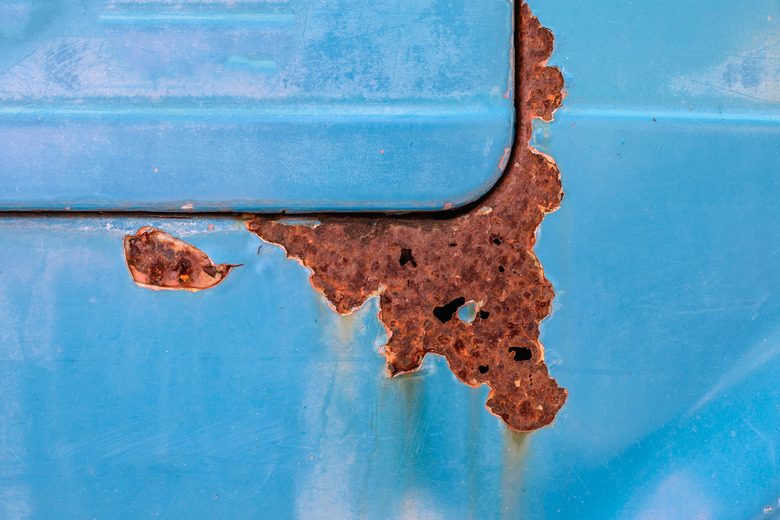Is Rust Dust Harmful?
A do-it-yourself project like removing the rust from metal chairs, before the primer and paint stages, requires you to take precautions against inhaling the dust when grinding or sanding the metal. While limited exposure to rust dust is not harmful in the long term, repeated exposure irritates the eyes, ears, nose and throat and can damage the lungs. Frequent and prolonged exposure to the dust from rusted metal can result in siderosis, a lung disease that leads to other complications like pneumonia or chronic obstructive pulmonary disease.
TL;DR (Too Long; Didn't Read)
The disease from too much iron-oxide exposure, siderosis, also called welder's lung or silver polisher's lung, deposits bits of iron in the lung. Since the disease doesn't always exhibit symptoms, it's important to ensure adequate protection. Workers most affected by siderosis, a form of pneumoconiosis, include those with jobs in the following fields:
* Welding
* Steel manufacture
* Mining
* Soldering
* Iron-steel rolling
* Metal polishing
* Metal sheetworking
Identifying Rust Particles
Identifying Rust Particles
Rust is the result of a complex chemical reaction involving iron, water and oxygen from the air. This compound occurs because iron atoms combine with oxygen to create the chemical formula of Fe2O3 or iron oxide. Ferric oxide does not cling to the metal once it forms but tends to flake off. Used also as a pigment for earthy paint colors, rust dust appears as tones in muted shades of yellow, orange, red, brown and black. When rust dust forms, sometimes parts of the iron begin to peel and flake as well. The dust often consists of fine particles, like flour, to large flake-sized pieces.
Potential Hazards
Potential Hazards
Without protective eye wear, iron oxide dust irritates the eyes, like any dust. Ferric oxide can also cause an upset stomach, but only if you ingest it in large quantities. The main hazard of ferric oxide is inhaling it as a fine dust or fumes. Inhalation causes lung irritation and coughing. Long-term inhalation causes siderosis where iron is deposited in the lungs, although this condition is normally considered benign and does not necessarily lead to physical indications but can lead to other conditions which do exhibit symptoms like COPD or pneumonia.
Exposure Limits
Exposure Limits
Government regulatory bodies set exposure limits for chemicals in the workplace, including for ferric oxide. The National Institute for Occupational Safety and Health has set a limit of 5 mg of iron oxide dust or fumes per cubic meter of air or m^3. This limit is the maximum average concentration of ferric oxide in air that a worker can inhale without requiring protective equipment over the course of a workday.
Protective Measures
Protective Measures
If a worker is exposed to ferric oxide in air at levels of up to 50 mg ÷ m^3, NIOSH recommends using a respirator equipped with a particulate filter. Between 50 mg ÷ m^3 and 125 mg ÷ m^3, requires an air respirator. At higher levels, NIOSH calls for either a supplied air, self-contained or powered air purifying respirator. A concentration of more than 2500 mg ÷ m^3 is considered immediately dangerous to life and health and requires a positive-pressure air respirator.
Cite This Article
MLA
Judge, Michael. "Is Rust Dust Harmful?" sciencing.com, https://www.sciencing.com/rust-dust-harmful-8606864/. 17 April 2018.
APA
Judge, Michael. (2018, April 17). Is Rust Dust Harmful?. sciencing.com. Retrieved from https://www.sciencing.com/rust-dust-harmful-8606864/
Chicago
Judge, Michael. Is Rust Dust Harmful? last modified March 24, 2022. https://www.sciencing.com/rust-dust-harmful-8606864/
